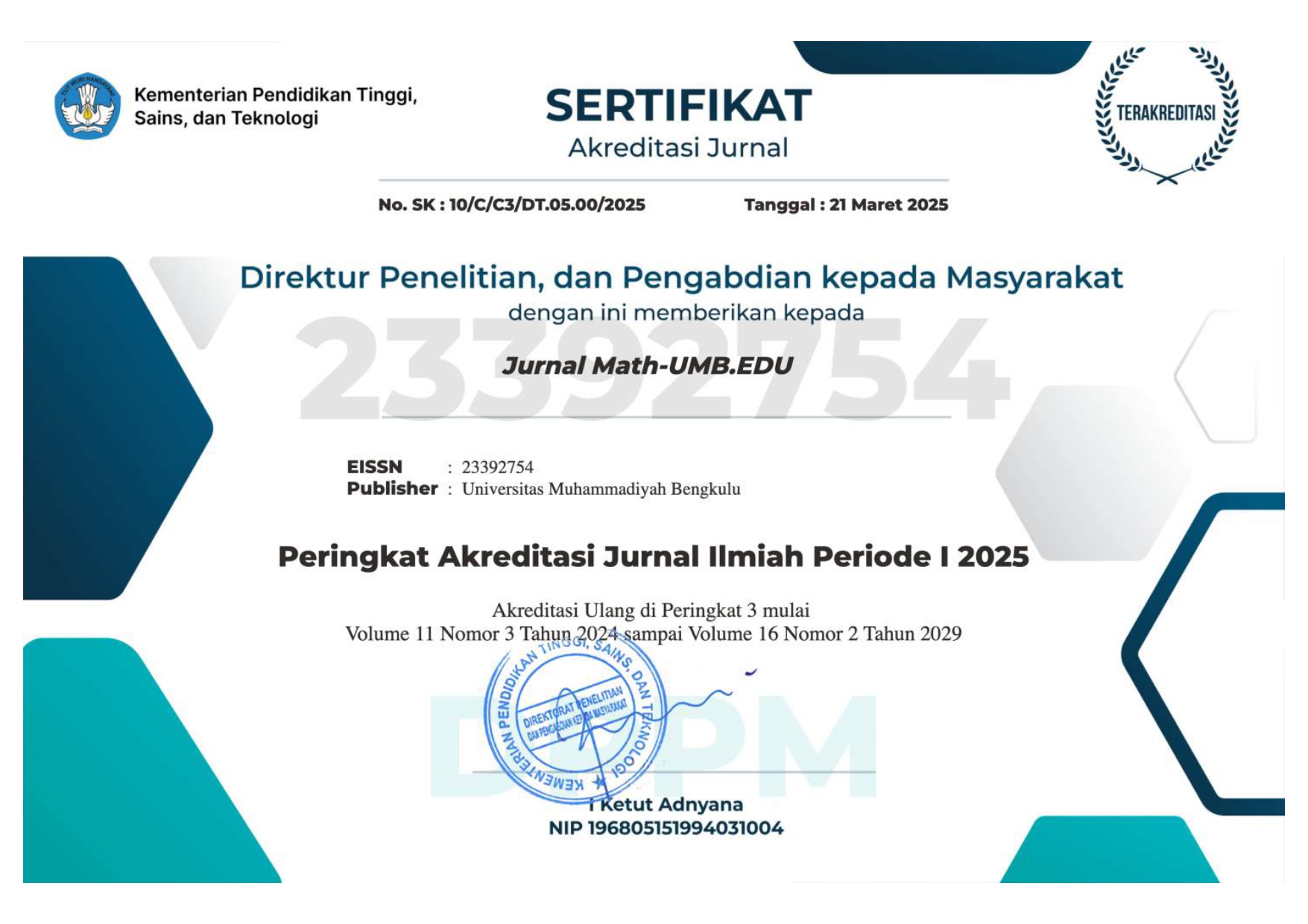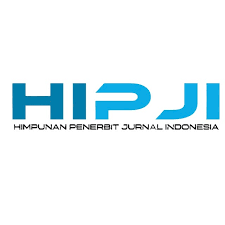PENERAPAN STUDENT TEAMS ACHIEVEMENT DIVISION UNTUK MENINGKATKAN AKTIVITAS DAN HASIL BELAJAR POKOK BAHASAN STATISTIKA
DOI:
https://doi.org/10.36085/math-umb.edu.v6i3.494Abstract
ABSTRACT
The purpose of this study was to improve the activities and learning outcomes of the subject matter of statistics in SMAN 7 Bengkulu city. Student learning outcomes regarding the subject matter of statistics still have not reached KKM, which is 75. This is because some students still consider that mathematics lessons are boring. Therefore, the researchers concluded that the learning process carried out must have variations to improve student learning activities through the application of the Student Teams Achievement Division learning model. This research is a classroom action research carried out in several cycles. Each cycle consists of four stages, namely planning, implementing actions, observing and reflecting. The study was conducted in SMAN 7 Bengkulu city with the research subjects being students of class XII IPA 5. Data collection techniques carried out in this study were observation and test of learning outcomes. The instruments used are student observation sheets and test questions. The indicator of success used is the activity of students said to increase if the results of observations of student activeness in general achieve active, ie achieving a score between 24-30 and completeness of learning in a classical manner will be achieved if 75% of students get a value of ≥75. Based on the results of the study, it was found that the mathematics learning outcomes of class XII IPA 5 students of SMA N 7 Bengkulu City increased with the application of the learning model of the student teams achievement division. This can be seen based on the results of the final test of each cycle, namely the average value in the first cycle is 71.77 with classical learning completeness 43.33%, in the second cycle increased to 76.64 with classical learning completeness 60.61%, and at cycle III increased to 83.24 with classical learning completeness 82.35%.
Â
Keywords:Model Student Teams Achievement Divis
Â
References
REFERENSI
Aqib, Zainal. 2014. Model-Model, Media, dan Strategi Pembelajaran Kontekstual (Inovatif). Bandung: Yrama Widya.
Arikunto, Suharsimi. 2010. Penelitian Tindakan Kelas. Jakarta: Bumi Aksara.
Isjoni. 2013. Cooperative Learning. Bandung: Alfabeta.
Kemendikbud. 2013. Matematika Kelas X. Jakarta: Kemendikbud.
Oktaviyanto, Johan. 2013. Penerapan Proses Eksplorasi, Elaborasi dan Konfirmasi Sebagai Upaya Meningkatkan Hasil Belajar Matematika Siswa Kelas VII SMP Negeri 11 Kota Bengkulu.Skripsi. Bengkulu: FKIP Universitas Bengkulu.
Slavin, Robert, E. 2015.Cooperative Learning Teori, Riset dan Praktik. Bandung: Nusa Media.
Sudjana. 2005. Metoda Statistika. Bandung: Tarsito Bandung.
Suprijono, Agus. 2014. Cooperative Learning Teori & Aplikasi Paikem. Yogyakarta: Pustaka Pelajar.















